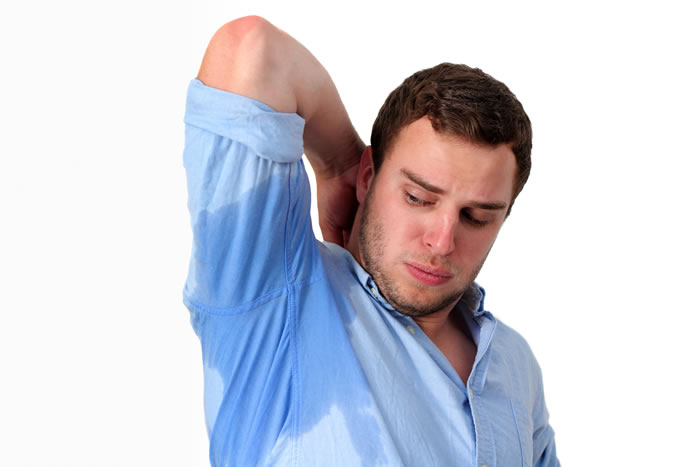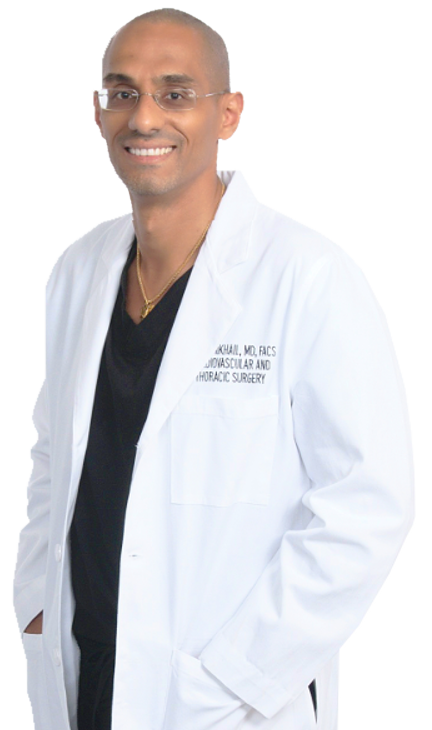
Please wait...

Please wait...
 Hyperhidrosis is excessive sweating. This condition is a common disorder that can affect one specific area (focal hyperhidrosis) or the whole body (generalized hyperhidrosis). Around 7.8 million Americans have hyperhidrosis. About 4 percent of Americans suffer from this disorder in their underarms (axillary hyperhidrosis) or in their palms or soles of their feet (palmoplantar hyperhidrosis).
Hyperhidrosis is excessive sweating. This condition is a common disorder that can affect one specific area (focal hyperhidrosis) or the whole body (generalized hyperhidrosis). Around 7.8 million Americans have hyperhidrosis. About 4 percent of Americans suffer from this disorder in their underarms (axillary hyperhidrosis) or in their palms or soles of their feet (palmoplantar hyperhidrosis).
This condition is not life-threatening, but it can be extremely uncomfortable and cause people psychological distress. Most people who suffer from this disorder find the condition to be embarrassing as the excessive sweating can stain clothes and get in the way of business, social, and romantic situations. When a person has a severe case of hyperhidrosis, he or she can have trouble shaking hands or gripping items.
Palmoplantar hyperhidrosis can begin around age 13, while axillary hyperhidrosis is known to start around late adolescence. However, hyperhidrosis can be present from birth.
When a person has hyperhidrosis, the excessive sweating disrupts daily life and activities. Excessive sweating episodes will occur at least once a week with no clear explanation. Hyperhidrosis symptoms include:
When a person has hyperhidrosis, he or she may be hesitant to make physical contact with others, may be self-conscious, socially withdrawn, depressed, selective with who they see, and is often worried about his/her body odor.
Hyperhidrosis can either be due to an underlying condition or have no apparent cause at all. The causes of secondary hyperhidrosis vary, but the causes of primary hyperhidrosis are not well understood.
Primary idiopathic (unknown cause) hyperhidrosis is usually localized. Secondary hyperhidrosis is due to an underlying health condition like obesity, menopause, gout, diabetes mellitus, hyperthyroidism, a tumor, or mercury poisoning.
Primary hyperhidrosis used to be linked to a person’s mental and emotional state (a person who was stressed, anxious or nervous) but recent research has shown that a person who has primary hyperhidrosis is no more prone to those psychological feelings than the rest of the population. Mostly, if a person is feeling stressed or anxious it’s because of the hyperhidrosis, not the other way around. Other studies have shown that certain genes can play a role in hyperhidrosis, so it could be inherited. Many patients with this disorder also have a parent or sibling with it.
Here are a few more causes of hyperhidrosis:
Spinal cord injury, anxiety, alcohol abuse, heart disease, Parkinson’s disease, pregnancy, respiratory failure, shingles, some cancers, some infections (HIV, TB, malaria), some antidepressants and other medications, and substance abuse.
For some people, heat can trigger an episode of hyperhidrosis, but for the most part, people with this condition sweat throughout the entire day regardless of the temperature or their mental state.
Hyperhidrosis is excessive sweating. This condition is a common disorder that can affect one specific area or the whole body.
Symptoms can vary depending on the severity and the condition. These can include frequent sweating, clammy palms to soaking of clothing.
Treatment for hyperhidrosis is varied. A doctor will evaluate a person’s triggers for hyperhidrosis, along with possible causes. After this evaluation, the doctor will come up with a treatment plan that can lead to positive results and an improved quality of life.
These can vary from Endoscopic Thoracic Sympathectomy to Botulinum Toxin injections.
This depends on what treatment option was administered. In most extreme cases when ETS is performed, most patients leave the hospital in under 24 hours and their recovery is generally complete within two weeks.
At-home lifestyle changes, like wearing loose clothing, armpit shields, avoiding spicy foods and using clinical strength antiperspirants, can reduce symptoms.

Don’t put your life in just any surgeon’s hands. Trust in Dr. Mikhail and his proven success!